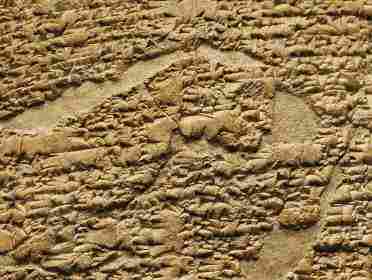Science, Law and Literature in Ancient Civilizations

Ancient Mathematics
Development of a complex society and centralized administration influenced the development of science and technology. Annual flooding and construction of irrigation systems, magnificent palaces, temples and tombs required basic mathematical knowledge. The ancient civilizations knew arithmetic operations (addition, subtraction, multiplication and division) and developed separate symbols for numbers. The Ancient Egyptians used 10 numeration system, while the Mesopotamians used the sexagesimal numeral system (base 60). The clay tablets found at the Library of Ashurbanipal also reveal that Babylonian knowledge of mathematic included quadratic and cubic equations, and fractions. Geometry was most likely limited to area and volume formulas. The Ancient Egyptians also came very close to the value of Pi.
Ancient Astronomy, Astrology and Calendars
All ancient civilizations were interested in celestial phenomena some of which occurred at the time of natural disasters or wars, while the others such as heliacal rising of Sirius indicated annual Nile flooding in Ancient Egypt. Celestial phenomena were therefore associated with events on Earth which resulted in development of both astronomy and astrology. Ancient astronomers differentiated between stars and planets, and calculated solar and lunar eclipses. Ancient Egyptians distinguished between 5 planets and 36 stars. Celestial objects and phenomena which were observed from the temples also formed the basis of the ancient calendars. Ancient Egyptians used a solar calendar and divided one year into 365 days. Mesopotamians used lunar calendar and divided one year into 12 lunar months with 30 days, one month into four weeks with 7 days, one day into 2x12 hours and one hour into 60 minutes. The Babylonians developed the zodiac with 12 signs and the first horoscopes.
Ancient Medicine
Ancient Egyptians knew the basics of human anatomy due to their burial customs characterized by mummification which also influenced the Ancient Egyptian medicine that was highly advanced for that time. Ancient Egyptian physicians and healers of whom is best known Imhotep (he was also the designer of the Djoser Pyramid) performed simple non-invasive surgery and setting bones, and used a variety of remedies which based on various herbs and minerals. Ancient Egyptians were also renowned as excellent gynecologists. Mesopotamian physicians and healers used the concept of diagnosis, prognosis, physical examination and prescription. At the Library of Ashurbanipal were found texts with detailed descriptions of symptoms of various ailments and a herbal handbook featuring descriptions of herbs and their uses for therapeutic purposes. Medicine in both Ancient Egypt and Mesopotamia as well as in other ancient civilizations was also greatly influenced by magic and religion.
Ancient Law and Legal Codes
Ancient legal codes are often associated with the Code of Hammurabi but the oldest surviving legal code was created by Ur-nammu, king of Ur about 2100 to 2050 BC. The Code of Ur-nammu is arranged in casuistic form in which a crime is followed by a punishment. This principle has been followed by later legal codes including the Code of Hammurabi created by the Babylonian king Hammurabi about 1800 BC. It contains 282 judgements of civil and criminal law and bases on the principle “eye for an eye” or lex talionis. The Code of Hammurabi was copied in the early classical antiquity and greatly influenced the legal history of the Western world. Among the most important ancient legal codes are also the Hittite code of laws created about 1400 BC. Unlike most other ancient civilizations, the Hittites did not know the principle “eye for an eye”. Law in both Ancient Israel and Vedic India was greatly influenced by religion. The Jewish law based on Torah or the Pentateuch authorship of which is attributed to Moses, while the Vedas represented the basis of the Indian law.
Ancient Literature
Development of writing system enabled creation of the first literary works of which are best known the Epic of Gilgamesh, the Hebrew Bible, the Book of Songs and Mahabharata.




